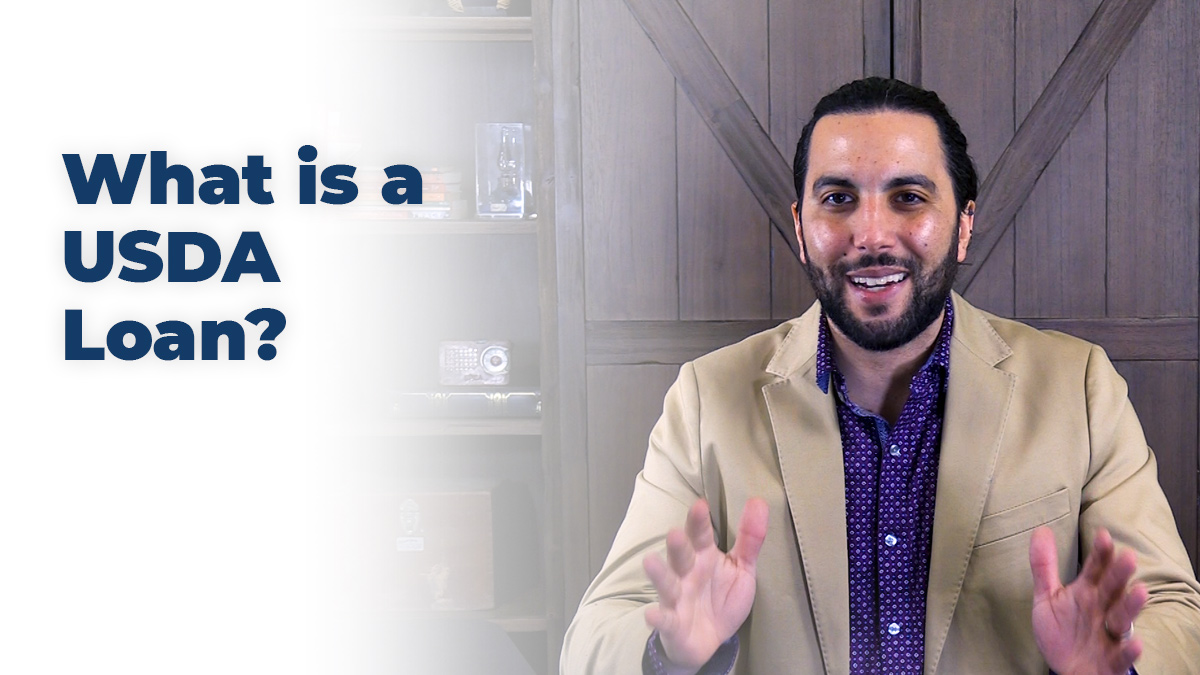In this article
A USDA loan, officially known as the USDA Rural Development Guaranteed Housing Loan Program, is a government-backed mortgage program designed to assist individuals and families in purchasing homes in eligible rural and suburban areas of the United States. The program is administered by the U.S. Department of Agriculture (USDA). This purchase program is considered one of the best available in the market today compared to other popular loan programs. USDA is only matched by VA loans which are exclusively for eligible veterans. USDA and VA loan programs are able to offer attractive market interest rates and 100% financing since the government guarantee helps protect lenders against loss.

Watch Now
What is a USDA loan?
USDA home loans are mortgages provided by the U.S. Department of Agriculture for eligible rural homebuyers as part of the USDA Rural Development Guaranteed Housing Loan Program. Rural individuals with low-to-average income become qualified under this program to buy homes. The USDA program offers home loans with no down payment, below-market mortgage rates, and reduced mortgage insurance. The program has helped hundreds of rural folks who never thought they could own a house to invest in their own homes.
What are the benefits of a USDA loan?
Applying for a USDA loan, specifically the USDA Rural Development Guaranteed Housing Loan program, can be a smart choice for several reasons, especially if you are looking to purchase a home in a rural area. Here are some of the key benefits of applying for a USDA Rural Loan:
No Down Payment: One of the most significant advantages of USDA loans is that they typically require no down payment. This can make homeownership more accessible to individuals and families who may not have substantial savings for a down payment.
Low-Interest Rates: USDA loans often offer competitive and low-interest rates, which can lead to lower monthly mortgage payments compared to loans with higher interest rates.
Flexible Credit Requirements: While the USDA has some credit score requirements, they tend to be more flexible compared to conventional loans. This means that individuals with less-than-perfect credit may still qualify for a USDA loan.
Income Eligibility: The program is designed to assist low to moderate-income households, so if your income falls within the USDA guidelines for your area, you may be eligible for a loan.
No Private Mortgage Insurance (PMI): Unlike many other types of loans that require private mortgage insurance when a down payment is less than 20%, USDA loans do not require PMI. This can save borrowers money each month.
100% Financing: In addition to not requiring a down payment, USDA loans can finance up to 100% of the property’s appraised value, including the upfront guarantee fee.
Geographical Eligibility: These loans are intended for rural and suburban areas, as defined by the USDA. If you want to purchase a home in an eligible area, a USDA loan can be a great option.
Favorable Loan Terms: USDA loans often offer long loan terms (typically 30 years), which can help make monthly payments more affordable.
Guaranteed Approval: While the loans themselves are guaranteed by the USDA, they are issued by approved lenders. This means that if you meet the eligibility criteria, your loan is typically guaranteed, provided you work with an approved lender.
How does a USDA loan work?
Qualifying for a USDA loan is generally considered tougher compared to many other types of mortgage loans, such as conventional or FHA loans. While USDA loans offer many advantages, it’s important to understand that there are specific eligibility criteria based on your household income and geographic location of the property. To qualify for a USDA loan, you need check if the property is USDA eligible.
Who qualifies for a USDA loan?
Here’s an overview of who qualifies for a USDA Rural Loan:
Rural Property Location: To be eligible for a USDA loan, the property you want to purchase or refinance must be located in an eligible rural area. The USDA provides an online map that allows you to check whether a specific address is in an eligible location.
Income Limits: Your household income should not exceed the income limits established for the USDA program in your area. Income limits are based on the number of people in your household and the median income in your county.
U.S. Citizenship or Permanent Residency: You need to be a U.S. citizen, U.S. non-citizen national, or qualified alien to qualify for a USDA loan.
Credit Score: While there is no specific minimum credit score requirement, your credit history should be in good standing, and lenders typically look for a credit score of 640 or higher. Lenders may also consider your credit history and overall financial situation.
Employment and Income Stability: Lenders will evaluate your employment history and income stability. A consistent source of income is important.
Debt-to-Income Ratio: Your debt-to-income (DTI) ratio should be within acceptable limits, typically around 41% to 45%, although exceptions may be made in certain cases.
Repayment Ability: You must demonstrate your ability to repay the loan, taking into account your income, expenses, and other debts.
To determine if you qualify and to learn more about the specific loan programs available in your area, it’s advisable to work with a USDA-approved lender like Moreira Team. The program’s numerous benefits, including no down payment, competitive interest rates, and flexible approval, make it an attractive choice for achieving the dream of homeownership. To determine your eligibility and explore your options, consult with one of our mortgage advisors to start the process of becoming a homeowner.

Are You Ready to Make a Move?
It's FREE and takes less than a minute to see what you could get.
